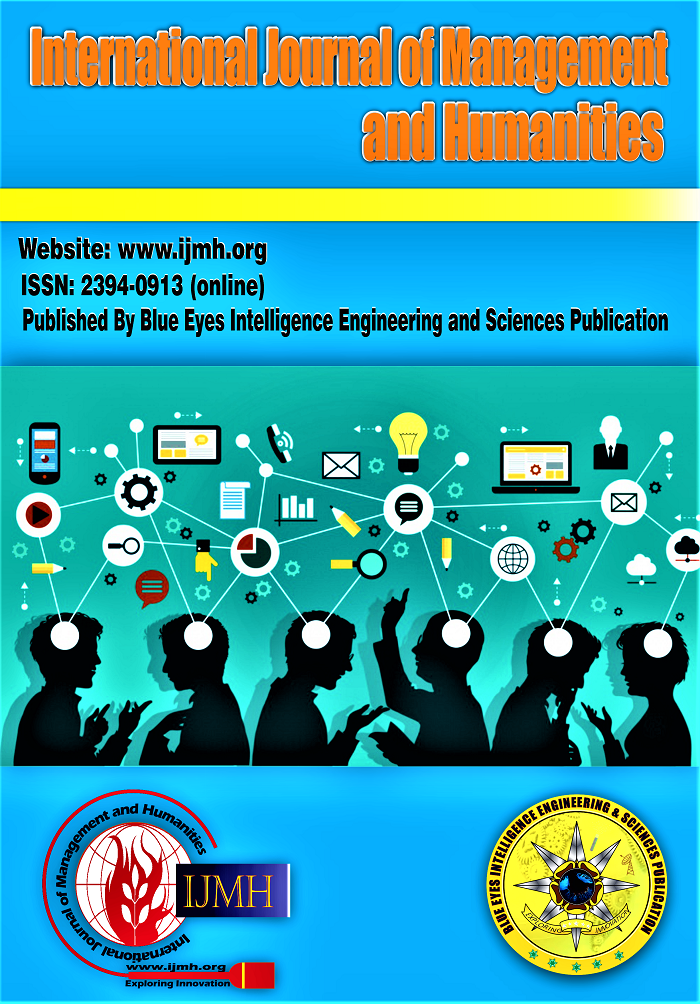Jhumpa Lahiri’s The Namesake Through the Lens of Diaspora Literature
Main Article Content
Abstract
Abundant papers have been written on Jhumpa Lahiri’s The Namesake, endeavoring to elaborate on alienation, ecologic overtones, cross-cultural conflict, feminism, existentialism, and identity crisis, to name a few. However, navigating through a labyrinth of complexities, this study, in addition to cultivating the results found hitherto, aims to crack the case of two acculturation strategies opted by Gogol, namely assimilation and integration. To further the point, this qualitative research which has been done based on a close reading approach, will reveal Gogol’s shift of strategy from assimilation to integration. In the second place, the lights are to be shed on the remarkable traces of re-orientalizationin the selected work, especially during the arrival of Gogol in Maxine’s house where binary opposition, i.e., the Occidental Culture/ Oriental Culture will be visible. Furthermore, this paper sets out to lay bare Moushumi as a foil character for Ashima, who, unlike Ashima’s vigorous allegiance to her husband, Bengali roots, and Patriarchal norms, is a Byronic-like character with intelligence, selfishness, refractoriness, complacency, and penchant for infraction of patriarchal rules. Last but not least, this study aims for a deeper understanding of the kernels of this diasporic novel including alienation, uprootedness, nostalgia, and search for genuine identity.
Downloads
Article Details
Section
How to Cite
References
Berry, John. “Immigration, Acculturation, and Adaptation”. Applied Psychology: An International Review (1997).
Berry, John. “Immigration Youth, Acculturation, Identity and Adaptation”, Lawrence Erlbaum Associates Publishers (2006).
Bhabha, Homi K. “The Location of Culture”, London: Routledge (1994).
Brah, Avtar. “Cartographies of Diaspora: Contesting Identities”, London: Routledge (1996).
Caesar, Judith. “Gogol’s Namesake: Identity and Relationship in Jhumpa Lahiri’s The Namesake”, Atenea (2007)
Dimitri, Jaywanti. “Second Generation Feminist Discourse on Expatriation: A Study of Ravinder Randhua’s A Wicked Old Woman and Altima Shrivastava’s Transmission”, Literary voice, Book Series (2000).
Hall, Stuart. “Cultural Identitiy and Diaspora”, Lawrence and Wishart (1996).
Lahiri, Jhumpa. “The Namesake”, Houghton Mifflin (2003).
Leyda, J. “An Interview with Jhumpa Lahiri”, Contemporary Women’s Writing (2011).
Nayer, P.K. “The Postcolonial Studies Dictionary”, New Jersey: John Wileys & Sons. 2015
Pal, Adesh Chakrabarti. “Theorizing and Critiquing Indian Diaspora”, New Delhi: Creative (2004).
Parmeswaran, Uma. “Trishanku and Other Writings”, Current Perspectives in Indian English Literature. Ed. Gauri Shankar Jha. New Delhi: Prestige Books (1998).
Safran, William. “Diasporas in Modern Societies Myths of Homelands and Return” (1991).
Spivak, Gayatri Chakravorty. “Diasporas Old and New: Women in the Transmissional World”, Textual Practice, Vol 10, NO 2 (1996).
Tyson, Lois. “Critical Theory Today”, London: Routledge (2006).
Zubair, Shirin. “Crossing Borders, Reinventing Identity: Hybridity in Pakistani English Fiction”, Pakistan Journal of Social Sciences (2012).
Virgin, Dr. B. A. (2019). Theme of Acculturation in Manju Kapur’s the Immigrant. In International Journal of Recent Technology and Engineering (IJRTE) (Vol. 8, Issue 4, pp. 7217–7219). https://doi.org/10.35940/ijrte.d5271.118419
Galimullina, A. F., Gainullina, G. R., Galimullin, F. G., Faezova, L. R., & Gilmutdinova, A. R. (2019). Peculiarity of Implementation of the National Cultural Code in Tatar Poetry and Prose of the Second Half of the X X Century. In International Journal of Engineering and Advanced Technology (Vol. 9, Issue 1, pp. 7421–7424). https://doi.org/10.35940/ijeat.a3106.109119
Annie Jamwal, Pragya Khanna, Role of Social Media In Reducing Culture Shock: A Research of Interstate Migrants in Jammu. (2019). In International Journal of Innovative Technology and Exploring Engineering (Vol. 9, Issue 2S3, pp. 463–466). https://doi.org/10.35940/ijitee.b1113.1292s319
Alhassan, B. G., Yusof, F. B., & Norrulashikin, S. M. (2020). Assimilation of Principal Component Analysis and Wavelet with Kernel Support Vector Regression for Medium-Term Financial Time Series Forecasting. In International Journal of Management and Humanities (Vol. 4, Issue 7, pp. 40–48). https://doi.org/10.35940/ijmh.g0667.034720





